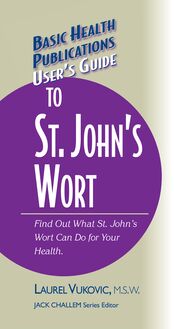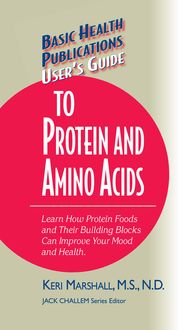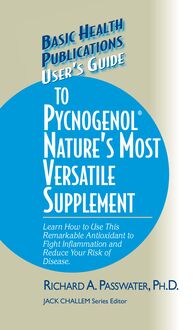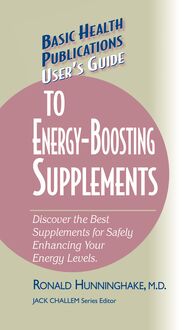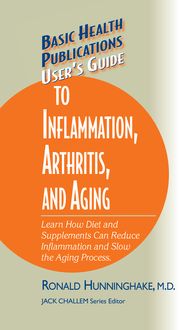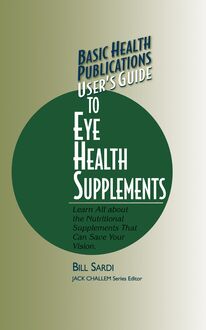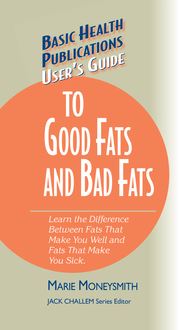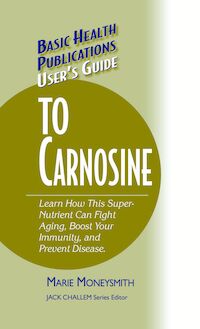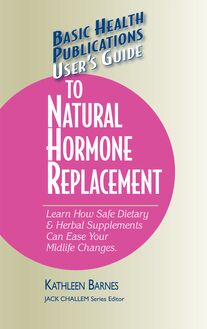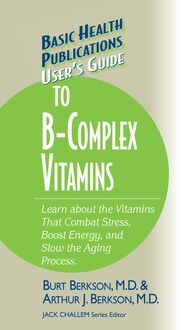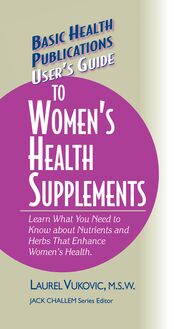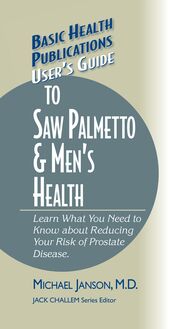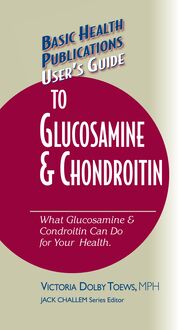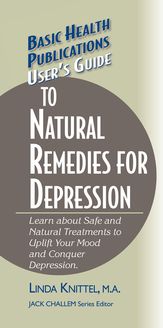User's Guide to Natural Treatments for Lyme Disease , livre ebook
60
pages
English
Ebooks
2006
Vous pourrez modifier la taille du texte de cet ouvrage
Obtenez un accès à la bibliothèque pour le consulter en ligne En savoir plus
Découvre YouScribe en t'inscrivant gratuitement
Découvre YouScribe en t'inscrivant gratuitement
60
pages
English
Ebooks
2006
Vous pourrez modifier la taille du texte de cet ouvrage
Obtenez un accès à la bibliothèque pour le consulter en ligne En savoir plus
Publié par
Date de parution
01 octobre 2006
Nombre de lectures
1
EAN13
9781591205302
Langue
English
Publié par
Date de parution
01 octobre 2006
Nombre de lectures
1
EAN13
9781591205302
Langue
English
J AMES J. G ORMLEY AND C AREN F EINGOLD T ISHFIELD
JACK CHALLEM Series Editor
The information contained in this book is based upon the research and personal and professional experiences of the authors. It is not intended as a substitute for consulting with your physician or other healthcare provider. Any attempt to diagnose and treat an illness should be done under the direction of a healthcare professional.
The publisher does not advocate the use of any particular healthcare protocol but believes the information in this book should be available to the public. The publisher and authors are not responsible for any adverse effects or consequences resulting from the use of the suggestions, preparations, or procedures discussed in this book. Should the reader have any questions concerning the appropriateness of any procedures or preparations mentioned, the authors and the publisher strongly suggest consulting a professional healthcare advisor.
Series Editor: Jack Challem Editor: Roberta W. Waddell Typesetter: Gary A. Rosenberg Series Cover Designer: Mike Stromberg
Basic Health Publications User’s Guides are published by Basic Health Publications, Inc. 28812 Top of the World Drive Laguna Beach, CA 92651 949-715-7327
Copyright © 2006 by James J. Gormley and Caren Feingold Tishfield
ISBN-13: 978-1-59120-530-2 ISBN-10: 1-59120-177-2
All rights reserved. No part of this publication may be reproduced, stored in a retrieval system, or transmitted, in any form or by any means, electronic, mechanical, photocopying, recording, or otherwise, without the prior written consent of the copyright owner.
Printed in the United States of America
10 9 8 7 6 5 4 3 2 1
C ONTENTS
Foreword
Preface
Introduction
1. What Is Lyme Disease?
2. Do I Have Lyme Disease?
3. First-Line Treatment—Antibiotic Therapy
4. Complementary Support for Lyme Disease: Dietary Supplements
5. Complementary Treatments for Lyme Disease: Case Histories
6. “I Am in Charge of My Lyme Disease,”
7. Reducing Exposure to Lyme Disease
8. Eating with Lyme Disease
Conclusion
Selected References
Resources
F OREWORD
I would like to personally thank James Gormley and Caren Feingold Tishfield for having written this book to help spread important information regarding one of the most misdiagnosed diseases of our time.
In 1994, my daily activities, which included playing sports outside, lying on the grass in the park, and simply walking across the lawn to get to a nearby swimming pool, were no different from those of millions of other people. Yet, as a perfectly healthy twenty year old, without any rash or other indication that I had been bitten by a tick, I suddenly began having a myriad of strange, unexplainable symptoms. From flulike symptoms, migraines, and partial paralysis, to joint pain, cardiac trouble, and overall malaise, I was becoming sicker and sicker.
Unfortunately, these symptoms mirrored those of many other illnesses, as Lyme disease so often does. After finally getting the correct diagnosis eight months later, I embarked on a very long journey to treat Lyme disease and the other tick-borne diseases that I had contracted.
Due to my own ongoing battle with this illness, in 2002 my husband and I decided to create a foundation called Turn the Corner, which is dedicated to the support of research, education, awareness, and innovative treatments for Lyme disease and other tick-borne diseases. We work hard to educate the public and physicians alike, and to create worldwide awareness of this disease and the integrative healing options that are available, which is why this book is so important.
In this book, James and Caren do an amazing job of defining Lyme disease and its significance as well as providing powerful and actionable prevention methods, and health-boosting treatment choices to help those who have been infected resume their normal lives.
As someone who has had Lyme disease for twelve years, I would encourage all of you to read this book carefully and share the knowledge with your children and the people you love. It is the sort of health empowerment embodied in a book such as this that may just keep this disease from robbing many people of the health and quality of life they treasure.
—Staci Grodin President, Turn the Corner Foundation www.turnthecorner.org
P REFACE
T he User’s Guide to Natural Treatments for Lyme Disease is an indispensable resource for people trying to make their way through the briar patch of chronic Lyme disease, which is one of the most challenging and controversial medical disorders encountered in the United States today. First, the guide presents a balanced view of the enormous differences of opinion among physicians on criteria for diagnosis, optimal dosage, and duration of antibiotic therapy. Second, this guide emphasizes the importance of integrating self-care with medical care. A health-promoting, anti-inflammatory diet must be a cornerstone of any healing program. If you are receiving prolonged antibiotic therapy, your diet must also be mindful of the food intolerances and problems of yeast overgrowth that can complicate antibiotic treatment.
Before developing experience with chronic Lyme disease, I had spent years practicing and teaching nutritional medicine and environmental health. Many of the patients I treated were experiencing health problems created by excessive use of antibiotics. Helping people overcome antibiotic side effects and avoid unnecessary antibiotic treatment was (and continues to be) an important part of my medical practice.
Several years ago, I realized that some patients in my care were infected with Borrelia or other tick-borne organisms. These patients were often surrounded by disagreements about their diagnoses. Typically, a doctor specializing in Lyme and related diseases (a Lyme-literate physician) had made a diagnosis of Lyme disease, and a rheumatologist or infectious disease specialist at a university-affiliated medical center had disputed it, based primarily upon the results of laboratory tests.
Most of the time, I discovered, the outcome of treatment would eventually indicate that the Lyme-literate doctor was right and the university specialist was wrong. As much as I had been an advocate of caution in the use of antibiotics, I realized that in order to serve my patients well, I had to advocate for the use of antibiotics, often at high dose and for prolonged periods, in appropriate cases.
I turned to established Lyme-literate physicians for advice and found that it was always given generously and thoughtfully—there were very few big egos in this community of doctors. I was gratified to learn that most Lyme-literate physicians had developed a keen interest in nutritional medicine as a support for the treatments they were prescribing. The integration of nutritional and herbal therapies, many of which are described in this Guide , with advanced use of conventional medication, has been a great asset to the care of people with late-stage Lyme disease.
My personal experience as a physician has led me to the following conclusions about the role of Lyme disease in chronic illness:
1. Lyme is great at masquerades. If there is a reasonable likelihood that Lyme disease is present, it is usually worthwhile treating, rather than waiting for diagnostic certainty.
2. There is no best treatment regimen for everyone. Individuality rules. The best results are achieved by a flexible and patient-centered approach.
3. People can recover fully from chronic Lyme disease. The horror stories posted in Internet chat rooms are worst-case scenarios, not typical outcomes.
4. Lyme disease often leaves a trail of biochemical and immune system problems in its wake. Curing the infection may not cure the effects of chronic inflammation. Integrative therapies play a critical role in helping the resolution of inflammation and restoring normal function to the metabolism, immune system, and nervous system. Furthermore, for some people, cure of infection can only occur after these areas have been addressed.
5. The ultimate challenge is knowing when antibiotic treatment can be stopped without a risk of relapse. Your physician needs your close attention and active participation to make the right decisions at this stage. Your observations and opinions are crucial to a successful outcome in the Lyme disease endgame. Learn to know your body and understand your symptoms.
The doctor alone cannot cure you.
—Leo Galland, M.D. Foundation for Integrated Medicine http://mdheal.org
I NTRODUCTION
I n 2003, Joan Hansen, a first cousin who lives in weston, Connecticut, asked me (JG) if I would ever consider writing a book about Lyme disease that included good information about holistic and complementary approaches.
Since Joanie, her husband, Bill, and their children were all affected with Lyme disease to one extent or another, I made a promise to her to gather good, take-home information—along integrative lines—and distill these insights and options into the form of a little book with a big purpose.
In March 2005, another one of us (CF) entered the picture, bringing both clinical nutritionist credentials and personal experience with Lyme disease symptoms that were helped by nutritional supplementation.
Thus our book was born.
During our research into both direct treatments for Lyme disease (such as antibiotic therapy) and complementary support (such as high-potency probiotics), we uncovered many therapies, for both treatment and relief of symptoms. We decided to focus more on those approaches that are believed to be profoundly safe, are in widespread use, and have an established basis in evidence-based practice.
This is not to say, however, that if an alternative therapy is not covered, or is mentioned only briefly, it is not safe. Nevertheless, we chose to err on the side of caution while, at the same time, providing detailed, powerful holistic and integrative support s
